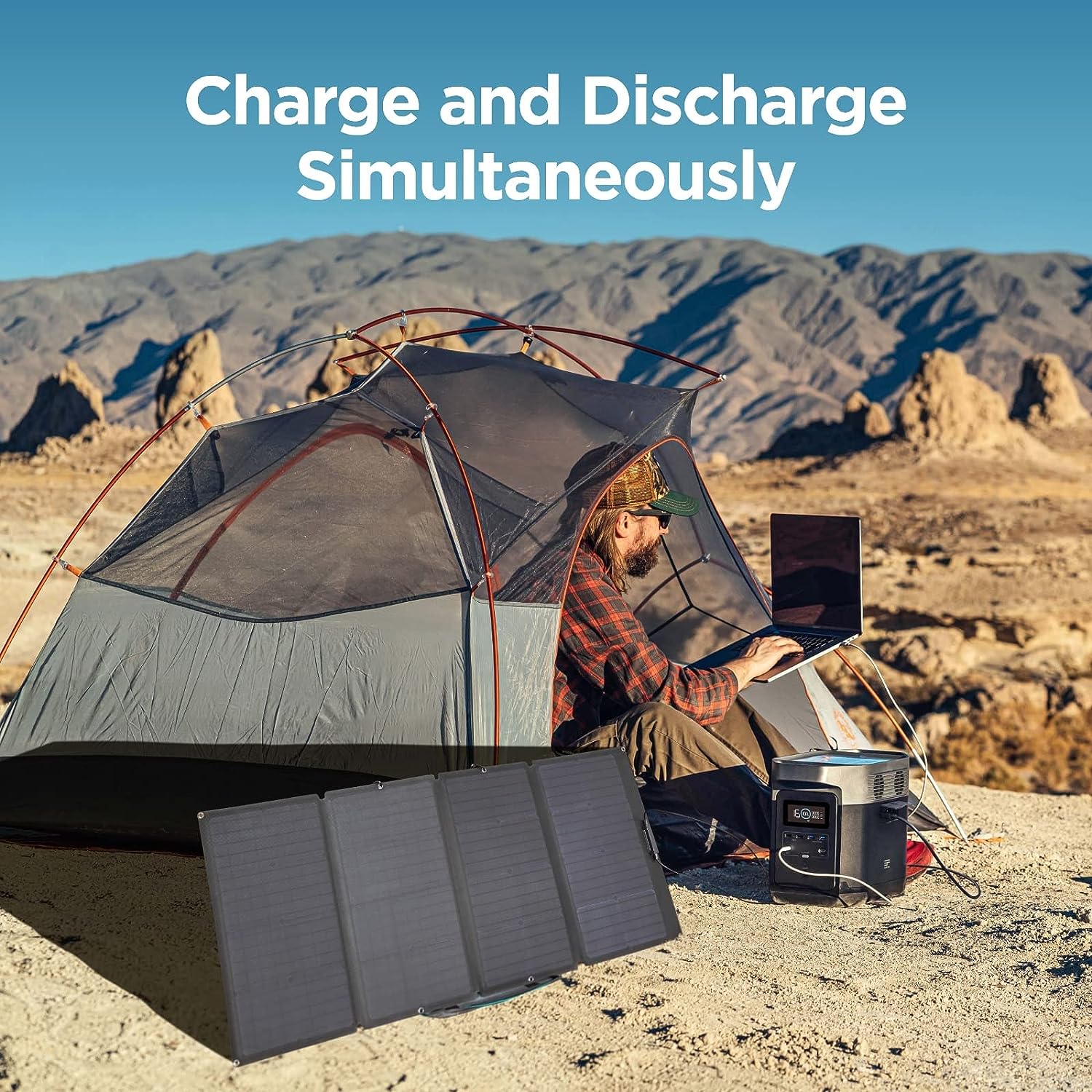YES, you can leave your EcoFlow plugged in, but be mindful of overcharging and overheating risks.
Understanding Ecoflow’s Battery Technology
Let’s dive right into the core of Ecoflow’s magic – battery technology. Ecoflow makes use of LiFePO4 batteries. These batteries are known for their long lifespan and high safety levels. Unlike other battery types, LiFePO4 batteries don’t usually suffer from overheating problems. It’s this clever engineering that allows you to keep your Ecoflow device plugged in without harming the battery’s life.
With these batteries, you can also expect a high-energy density. It’s why the hardware of Ecoflow offers such outstanding performance in a compact size. However impressive the battery life of an Ecoflow device might be, it’s still crucial to manage it thoughtfully.
Here are several key points worth noting about Ecoflow’s battery technology:
- Battery Longevity: LiFePO4 batteries typically last longer than other types of batteries.
- Safety: The inherent stability of these batteries greatly reduces the risk of accidents leading to fire or explosion.
- Energy Density: LiFePO4 batteries have a high energy density. They pack significant power into a relatively small package.
- Performance: The high-energy density and stability of LiFePO4 batteries allow Ecoflow devices to provide reliable performance.
While it’s okay to leave your Ecoflow device plugged in, it’s always a good idea to keep an eye on it. Technology, no matter how advanced, can sometimes be unpredictable. Ecoflow has made strides to ensure that their products are safe and reliable — but we should still play our part in making sure we’re using these devices responsibly.
Effective Battery Management: The Benefits of Keeping Your Ecoflow Plugged In
You must be wondering, “Can I leave my Ecoflow plugged in?” My short answer is, yes. But let’s dive in a bit more to see why.
Preserving your Ecoflow’s battery life and maintaining its efficiency is one step in good gadget care. Given that these portable power stations aren’t exactly cheap, it’s key to getting the most from your Ecoflow. It’s no surprise that leaving it plugged in most of the time can help reap a few benefits.
Firstly, you’ll have immediate access to a fully charged unit for emergency use or spontaneous adventures. No more waiting around for the battery to charge before you can set off on your next escapade. Keeping your Ecoflow plugged in means that it’s always ready to go.
Secondly, frequent charging can help conserve the battery’s lifecycle. With lithium-ion batteries like those in Ecoflows, there’s a common misconception that they must be regularly drained and then fully charged, much like the nickel-cadmium batteries of old. This isn’t necessary with modern technology. Lithium-ion batteries do not require full depletion before being recharged.
| Nickel-Cadmium | Lithium-Ion | |
|---|---|---|
| Need for regular complete discharging | Yes | No |
Leaving your Ecoflow plugged in eliminates the need for frequent recharging. This helps avoid the constant load on the battery, prolonging its life.
Another benefit is the savings on power. By leaving your Ecoflow plugged in, you’re utilizing the efficient solar power feature these devices sport. This not only cuts down on your electricity bills but also reduces your carbon footprint.
In summary, don’t hesitate to leave your Ecoflow plugged in regularly. It’s beneficial to the device’s battery life, your convenience, and the environment. Being mindful of your device’s power management can go a long way in ensuring its longevity. Remember, good gadget care is as much about smart usage as it is about the right maintenance!
Conclusion: Making the Best Use of Your Ecoflow
So, we’ve reached the end of our journey. It’s been a unique exploration into the applicability and usage rules of Ecoflow battery backups. It’s clear that the question, “Can I leave my Ecoflow plugged in?” isn’t a yes or no debate.
Based on the manufacturer’s advice, you certainly can keep your Ecoflow plugged in when it’s not in use. This practice does not lead to overcharging, thanks to the built-in protection systems designed to prevent battery damage due to overcharging. However, a few key points to remember:
- Do moderate the duration. If you plan to store it without use for a substantial period, say more than a few months, it’s best to charge it up to around 50-60% before storage.
- Do maintain a routine check. You may want to give it a full charge and discharge at least once a month.
- Don’t forget the environmental factor. Hot or very cold storage spaces may affect the battery life.
In using Ecoflow as an uninterrupted power supply (UPS), you’ll have a unique source of backup power during power outages. It’s important to optimize your Ecoflow usage to extend battery longevity and reliability.
To get the most out of your Ecoflow, keep good maintenance habits. Regular battery health checks, mindful usage, and proper storage practices can go a long way to ensuring you’re able to depend on this trusty power source when you need it most. The Ecoflow isn’t just a battery, it’s your gateway to uninterrupted workflow, enjoyable recreational activities, and peace of mind during unpredictable power disruptions.
In a nutshell, Ecoflow batteries are advanced, versatile and durable. They’re designed with user convenience in mind and created to be power reserves you can rely on. So go ahead, make the most out of your Ecoflow.





